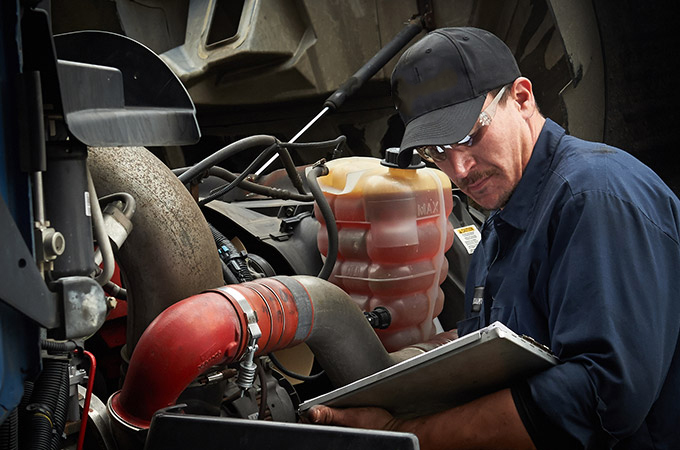Mastering Truck Maintenance: An Essential Guide to Servicing, Repair, and Overhauling
Trucks play a vital role in our economy, transporting goods and providing essential services across various industries. Just like any vehicle, trucks require regular maintenance to ensure they operate safely, efficiently, and for an extended period. Understanding the distinction between servicing, repair, and overhauling is crucial for making informed decisions about your truck’s maintenance needs.
Understanding Truck Servicing
Truck servicing is a preventative measure that involves a thorough inspection of various components, followed by the replacement of any worn or damaged parts. It’s like giving your truck a comprehensive checkup to identify and address potential issues before they escalate into major breakdowns. Regular servicing typically includes essential tasks such as:
- Oil changes and tune-ups
- Brake checks and fluid level adjustments
- Tire pressure monitoring and tread wear inspection
- Filter replacements and lubrication of essential components
- A comprehensive inspection of the engine, transmission, and other critical systems
Distinguishing Truck Repair from Servicing
While servicing focuses on preventative maintenance, truck repair addresses specific problems that have already occurred. It’s like treating an illness or fixing a broken component. Repairs are typically more immediate and focused on restoring functionality to a particular system or component. Common truck repairs include:
- Replacing worn or damaged brake pads or rotors
- Fixing electrical system malfunctions
- Addressing suspension or steering issues
- Repairing or replacing damaged engine or transmission components
Comprehending Truck Overhauling
Truck overhauling is a major repair or rebuild of an entire system or component, typically involving replacing or rebuilding several major components. It’s like giving your truck a major overhaul to address extensive wear and tear or significant damage. Overhauls are less common than servicing or repair but are necessary when a truck has suffered major damage or is nearing the end of its useful life. Common overhauling tasks include:
- Rebuilding the engine or transmission
- Replacing the differential or axles
- Overhauling the suspension or steering system
- Restoring the electrical system to its original condition
Maintaining Your Hino Truck with Genuine Parts
When it comes to maintaining your Hino truck, using genuine Hino parts is crucial for ensuring optimal performance, durability, and long-term reliability. Genuine Hino parts are rigorously tested and engineered to meet the highest standards of quality and fit perfectly with your Hino truck. They provide numerous benefits over aftermarket alternatives, including:
- Enhanced performance and fuel efficiency
- Reduced wear and tear, extending the lifespan of your truck
- Improved safety and reliability
- Peace of mind knowing you’re using parts specifically designed for your Hino truck
Key Differences between Servicing, Repair, and Overhauling
Here’s a summary table highlighting the key distinctions between servicing, repair, and overhauling:
Essential Tips for Truck Maintenance
By following these practical tips, you can help extend the life of your truck, optimize its performance, and minimize costly repairs:
- Adhere to the manufacturer’s recommended maintenance schedule
- Use high-quality lubricants and fluids, including genuine Hino parts
- Drive carefully and avoid excessive wear and tear
- Monitor tire pressure, tread wear, and fluid levels regularly
- Be attentive to warning lights or unusual noises and address them promptly
Regular truck maintenance is essential for ensuring the safety, performance, and longevity of your truck. By prioritizing preventative maintenance, choosing a reliable truck repair service, and using genuine Hino parts, you can keep your truck running smoothly and cost-effectively for years to come. Remember, a well-maintained truck is a valuable asset for your business or personal needs.


Comments are closed.